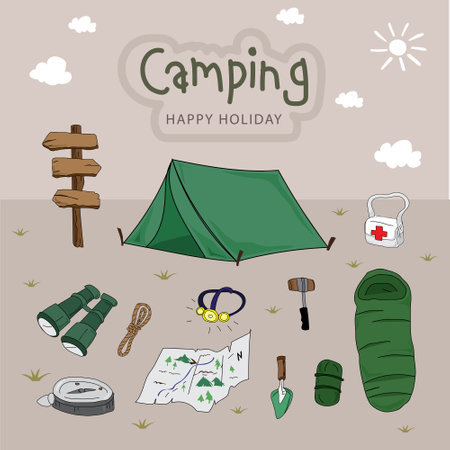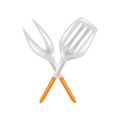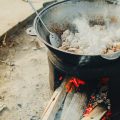Understanding Your Family’s Needs
Before you start planning your family camping meals, it’s important to understand the unique needs of everyone going on the trip. Taking the time to think about food preferences, allergies, and portion sizes will help make sure everyone is happy, full, and energized for outdoor fun.
Know Everyone’s Dietary Preferences
Start by making a list of what each family member likes and doesn’t like. Some people might prefer vegetarian options, while others may love meat-based meals. Also consider picky eaters—especially kids—so you can plan meals that won’t be left uneaten.
Tip:
Have a quick family meeting or send out a group message to ask about favorite camping foods or any strong dislikes.
Be Aware of Food Allergies and Restrictions
If someone in your family has food allergies or dietary restrictions (like gluten-free, nut-free, or dairy-free), be sure to plan meals accordingly. Labeling ingredients ahead of time and packing allergen-safe snacks can prevent health issues at the campsite.
| Family Member | Allergies / Restrictions | Meal Notes |
|---|---|---|
| Susan | Lactose Intolerant | No cheese or milk; bring almond milk |
| Mike | Peanut Allergy | Avoid peanut butter; check snack labels |
| Emma | Vegetarian | No meat; include tofu or beans |
Estimate Proper Portion Sizes
You’ll want to avoid both overpacking and running out of food. Think about how much each person typically eats at home and adjust for extra activity during camping (like hiking or swimming).
| Meal Type | Ages 5–12 | Ages 13–Adult |
|---|---|---|
| Breakfast (e.g., oatmeal) | 1/2 cup dry oats | 1 cup dry oats |
| Main Dish (e.g., chili) | 1 cup per person | 1.5–2 cups per person |
| Smores Supplies | 1 graham cracker set + 1 marshmallow + 1 chocolate square | 2 graham cracker sets + 2 marshmallows + 2 chocolate squares |
Pro Tip:
If youre not sure how much to bring, its better to slightly overestimate non-perishable items like pasta or granola bars than risk under-packing.
Create a Simple Checklist
A checklist helps keep everything organized. Include food preferences, allergies, portion estimates, and even favorite campfire treats!
- [ ] List of everyones favorite meals/snacks
- [ ] Noted food allergies and dietary needs
- [ ] Portion size guide by age group
- [ ] Non-perishable back-up options packed
The better you understand your family’s needs, the easier it will be to create a meal plan that keeps everyone satisfied and healthy during your camping adventure.
2. Essential Gear for Camp Cooking
When youre planning meals for a family camping trip, having the right cooking gear makes everything easier and more enjoyable. Whether you’re making pancakes for breakfast or grilling burgers for dinner, these essentials will help you cook safely and efficiently in the great outdoors.
Camp Stoves and Fuel
A reliable camp stove is a must-have for any family camping adventure. Look for a two-burner propane stove if youre cooking for multiple people—it’s perfect for boiling water on one side while frying on the other. Make sure to bring enough fuel canisters to last the entire trip.
Popular Types of Camp Stoves:
| Type | Best For | Pros | Cons |
|---|---|---|---|
| Two-Burner Propane Stove | Family meals, multiple dishes | Even heat, easy to use, fast setup | Bulky, requires propane canisters |
| Single-Burner Backpacking Stove | Lightweight trips, small meals | Compact, lightweight | Not ideal for large groups |
| Campfire Grill Grate | Cooking over an open fire | No fuel needed, adds smoky flavor | Weather-dependent, harder to control heat |
Coolers and Food Storage
Keeping your food fresh and safe is crucial when camping with your family. A high-quality cooler helps preserve perishable items like meat, dairy, and fresh produce. Opt for coolers with thick insulation and bring extra ice or ice packs. Consider packing a separate cooler just for drinks to avoid opening the food cooler too often.
Tips for Effective Food Storage:
- Use airtight containers: Keep bugs and moisture out.
- Label everything: Helps with quick meal prep and avoids waste.
- Freeze ahead: Frozen meals or ingredients act as extra ice blocks.
Cooking Utensils and Cookware
You don’t need to pack your whole kitchen, but a few key tools make camp cooking much easier. Think about what meals you plan to prepare and pack accordingly.
Campsite Cooking Checklist:
| Item | Description |
|---|---|
| Pots & Pans (non-stick preferred) | For boiling, sautéing, and frying |
| Spatula & Tongs | Handling grilled or pan-fried foods safely |
| Cutting Board & Knife | Chopping vegetables or slicing meat on-site |
| Ladle & Serving Spoon | Scooping soups, stews, or pasta dishes easily |
| Tin Foil & Zip-Top Bags | For wrapping food or storing leftovers securely |
Food-Safe Storage Solutions
Bears, raccoons, and insects are common visitors at campgrounds—so keeping your food sealed and stored properly is essential. Use bear-proof containers where required by local regulations. Otherwise, lock food in your vehicle overnight or use sturdy plastic bins with tight lids.
Storage Safety Tips:
- Avoid leaving food out: Clean up immediately after meals.
- Use odor-proof bags: Especially for snacks and trash.
- Bring trash bags: Pack it in, pack it out—never leave waste behind.
The right gear not only makes mealtime easier but also keeps your family safe and comfortable while enjoying delicious food in nature. Having these essentials on hand sets you up for a smooth and stress-free camping experience.

3. Easy and Delicious Camp Meal Ideas
Planning meals for a family camping trip doesn’t have to be complicated. With a few simple ingredients and a little prep, you can enjoy tasty, satisfying meals that everyone will love—without spending hours cooking. Below are easy meal ideas for breakfast, lunch, dinner, and snacks that are perfect for the campsite.
Breakfast
Start your day with quick and hearty breakfasts that fuel your family for outdoor fun. These recipes require minimal prep and cook quickly over a camp stove or fire.
| Meal | Main Ingredients | Prep Tips |
|---|---|---|
| Campfire Breakfast Burritos | Scrambled eggs, cheese, pre-cooked sausage, tortillas | Wrap in foil and heat over fire or stove |
| Pancake Mix Packets | Store-bought mix, water, syrup | Use a squeeze bottle for easy pouring on griddle |
| Fruit & Granola Yogurt Cups | Greek yogurt, granola, fresh berries | No cooking needed – just assemble and enjoy |
Lunch
Lunchtime at the campsite should be fast and fuss-free so you can get back to hiking, swimming, or relaxing. These simple meals come together quickly with little cleanup required.
| Meal | Main Ingredients | Prep Tips |
|---|---|---|
| Turkey & Cheese Wraps | Tortillas, deli turkey, cheese slices, lettuce | Roll up ahead of time and store in cooler |
| Campfire Grilled Cheese Sandwiches | Bread, butter, cheese slices | Cook in foil over the campfire or on a skillet |
| Pasta Salad To-Go | Pasta, cherry tomatoes, cucumbers, Italian dressing | Make ahead at home and chill in cooler |
Dinner
Dinners around the campfire are a great way to end the day. These one-pot or foil-packed meals are easy to make and clean up is a breeze.
| Meal | Main Ingredients | Prep Tips |
|---|---|---|
| Foil Packet Fajitas | Sliced chicken, bell peppers, onions, fajita seasoning | Add all ingredients to foil packets and cook over fire |
| Campsite Chili | Canned beans, ground beef (pre-cooked), tomato sauce, spices | Heat everything in one pot over camp stove or fire grate |
| Sausage & Veggie Skewers | Kielbasa sausage, zucchini, bell peppers, mushrooms | Skewer and grill directly over the fire or barbecue grill |
Snacks & Treats
No camping trip is complete without fun snacks! These treats are easy to pack or whip up when hunger strikes between meals.
- Smores: Classic combo of graham crackers, marshmallows, and chocolate melted over the fire.
- Trail Mix: Mix nuts, dried fruit, pretzels, and chocolate chips in resealable bags for an anytime snack.
- Crispy Apple Nachos: Slice apples thinly and top with peanut butter drizzle and granola.
- No-Bake Energy Bites: Combine oats, honey, peanut butter, and mini chocolate chips; roll into balls before your trip.
Pro Tips for Camp Cooking Success:
- Pre-chop ingredients at home: Saves time and reduces waste at the campsite.
- Use resealable bags: Great for storing marinated meats or pre-measured dry ingredients.
- Create a meal bin: Pack all meal-related items (spices, utensils) together for easy access.
The key to successful camp meals is keeping things simple while still enjoying delicious food. Choose recipes that require few ingredients but deliver big flavor—your whole family will thank you!
4. Make-Ahead and Pack-Right Tips
One of the best ways to simplify cooking on a family camping trip is to prep as much as you can at home. Not only does it save time at the campsite, but it also helps you stay organized and reduce waste. Here’s how to get started with make-ahead meals and smart packing strategies.
Prep Meals at Home
Doing the bulk of your meal prep before leaving home makes mealtime at camp easier and faster. Chop veggies, marinate meats, and even pre-cook some dishes that can be easily reheated over the campfire or stove.
Easy Make-Ahead Ideas:
- Foil packet meals: Assemble ahead with protein, veggies, and seasoning; just toss them on the fire.
- Pancake mix: Combine dry ingredients in a zip-top bag; just add water or milk at the campsite.
- Pasta salads: Make them at home, store in sealed containers, and serve cold or room temp.
- Breakfast burritos: Cook, wrap in foil, freeze, and reheat over the fire.
Organize Food for Travel
The way you pack your food can make a big difference in keeping things fresh and easy to find. Use labeled bins or clear storage containers to separate meals by day or type (breakfasts, lunches, dinners, snacks).
Sample Packing Organization Table:
| Container | Contents | Label Example |
|---|---|---|
| Cooler #1 | Dairy, Meats, Frozen Items | “Cold Foods – Keep Closed” |
| Bin #1 | Dry Goods: Bread, Cereal, Pasta | “Dry Food – Pantry Items” |
| Bin #2 | Snacks & Kids’ Treats | “Snacks – Easy Access” |
| Cooler #2 | Beverages and Fruit | “Drinks & Fruit – Open Often” |
Keep It Fresh Until You Cook
No one wants spoiled food halfway through a camping trip. Keep things cool by using ice blocks instead of loose ice—they last longer and create less mess. Freeze water bottles to use as extra ice packs that double as drinking water later on.
Extra Tips for Freshness:
- Use airtight containers: Keeps moisture out and prevents leaks.
- Separate raw meats: Always store separately to avoid cross-contamination.
- Plan meals for early days: Perishable foods should be used within the first couple of days.
- Pre-freeze meals: Helps keep your cooler colder for longer while slowly thawing for later use.
With a little prep work and smart packing techniques, your familys camping meals can be stress-free, delicious, and safe to eat every day of the trip!
5. Safety and Cleanup in the Wild
When youre camping with your family, keeping your campsite clean and safe is just as important as planning tasty meals. Not only does it help you avoid attracting wildlife, but it also ensures that everyone stays healthy and that you leave nature just as beautiful as you found it.
Food Safety Tips at Camp
Keeping food fresh and safe to eat while camping requires a bit of preparation. Heres how to make sure your meals are safe for the whole family:
- Pack perishables in a cooler: Use plenty of ice or frozen gel packs and keep the cooler in the shade.
- Keep raw meats separate: Store them in sealed containers or zip-top bags to prevent cross-contamination.
- Cook foods to proper temperatures: Bring a meat thermometer if youre grilling burgers or chicken.
- Wash hands often: Use biodegradable soap and water or hand sanitizer before handling food.
Smart Waste Management
A clean camp is a happy camp. Managing waste properly helps prevent pests, protects wildlife, and keeps your site pleasant for everyone.
| Type of Waste | What to Do |
|---|---|
| Food Scraps | Pack out all leftovers; never bury or burn food waste. |
| Trash | Bring sealable trash bags and store them away from your sleeping area. |
| Dishes | Use a small basin with biodegradable soap; strain food bits and pack them out. |
The “Leave No Trace” Approach
The Leave No Trace principles are essential for respecting nature while enjoying it. When it comes to meal planning and cleanup, these are especially helpful:
- Avoid single-use plastics: Pack reusable plates, utensils, and containers.
- Campsite inspections: Before leaving, do a full sweep to pick up any trash or forgotten items.
- No food left behind: Store all food in bear-proof containers or locked vehicles when not in use.
Tidy Campsite Checklist
- [ ] Cooler stored in shaded spot
- [ ] Trash bag sealed and away from tent
- [ ] Food stored securely overnight
- [ ] Dishes cleaned and dried before bed
- [ ] Campsite inspected for litter before departure
Your campsite should be as clean when you leave as it was when you arrived—maybe even cleaner! With good habits and a little effort, your family camping trip can be both fun and eco-friendly.


